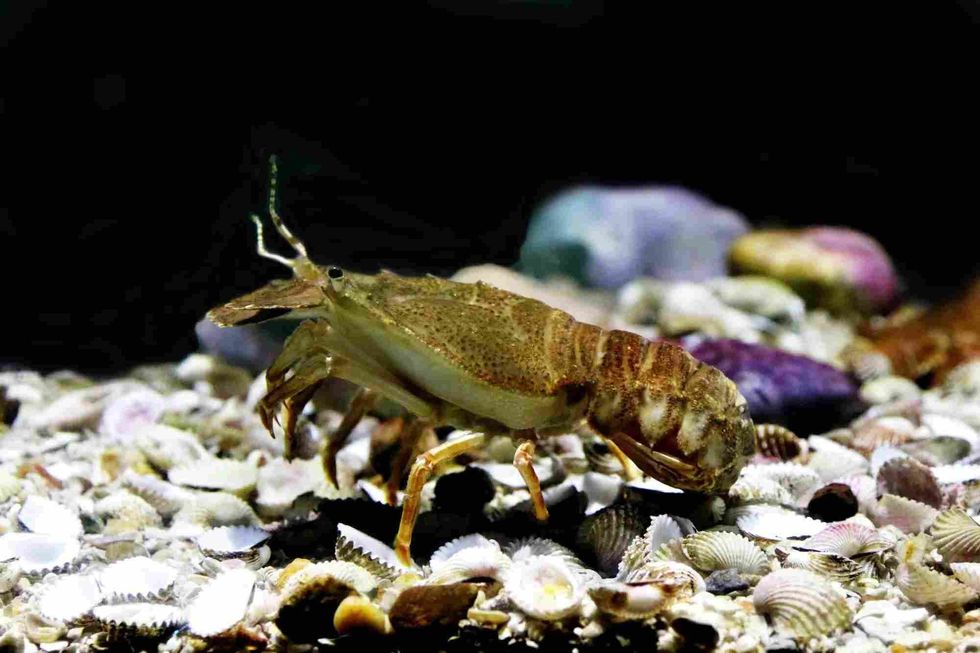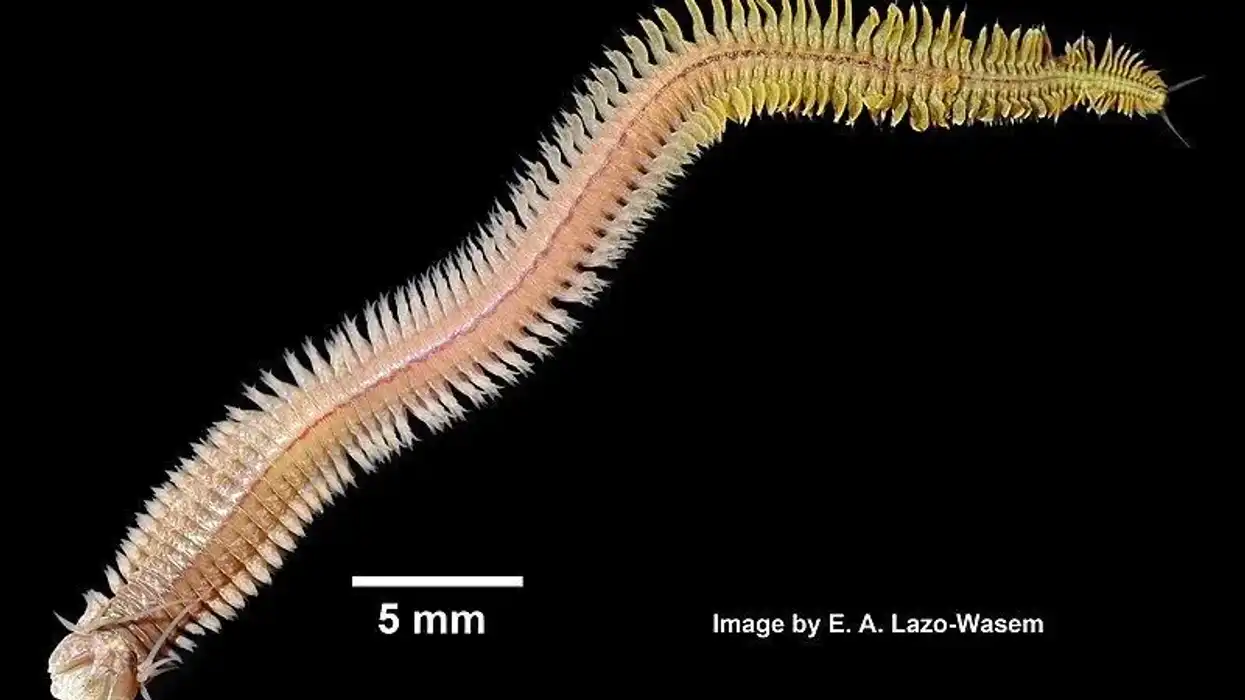Lobsters are well-liked animals that have inhabited our seas for about 480 million years. The flathead lobster (Thenus orientalis) of the family Scyllaridae and genus Thenus is one such lobster.
In many places fishing of these large slipper lobsters is illegal.
They are most prevalent in the Indo-West Pacific area.
They go by the name Bay lobster in Australia and many other names such as bug, bug lobster, Common Flapjack lobster, Flathead Locust lobster, Gulf lobster, Moreton Bay Bug, Mud lobster, Mug Bug lobster, Northern Bay lobster, Rock lobster, Sand Bug lobster, Sand Crayfish, Sand lobster, Shovel-nosed lobster and oriental flathead lobster throughout the world.
They are native to many places so it is hard to say they are endemic.
If you like reading about the oriental flathead lobster and want to know more about their lifestyle, habitat, care, and facts, then read on! Don't miss out on our other articles on Blue crab facts and the King crab facts.
Flathead Lobster Interesting Facts
What type of animal is a flathead lobster?
The oriental flathead lobster is a type of lobster that belongs to the arthropod phylum.
What class of animal does a flathead lobster belong to?
The oriental flathead lobster (Thenus orientalis) is a part of the Malacostraca family of the Animalia kingdom.
How many flathead lobsters are there in the world?
The precise number of flathead lobsters, commonly known as the Moreton Bay bug, is unclear. However, the global yearly output of slipper lobsters is approximately 5000 tonnes, of which the vast majority are flathead slipper lobsters (Thenis orientalis).
Where does a flathead lobster live?
This lobster has been discovered in the Indo-West Pacific. Their range stretches from East Africa to China and southern Japan. The majority of the fish are captured in the Philippines and along Australia's northern coast, from Western Australia to Queensland. In Malaysia and Singapore, they are captured in small quantities.
What is a flathead lobster's habitat?
The habitat of the flathead lobster species is primarily sand areas and shell bottom reefs. During the day, these nocturnal lobsters hide under shell bottoms or soft substrate of sand. They are actively feeding at night in a depth of 0.004-0.04 mi (8-70 m), perhaps even 0.06 mi (100 m), but only on rare occasions
Who do flathead lobsters live with?
Flathead slipper lobster dwells in caves and fissures alone, in small groups, or in tiny clusters. They can be seen together in quite larger groups at night when they come out to feed in order to defend themselves.
How long does a flathead lobster live?
After six months, only a small percentage of the larvae survive. The lifespan of this species of slipper lobster is said to be up to 10 years. Due to fisheries or entrapment for consumption, they have a short lifespan in almost all places throughout their range.
How do they reproduce?
The bay lobster attains sexual maturity in about three years, after which they are ready to mate. Following the mate selection, both sexes spend a few days together during which courtship displays are exhibited by the male known as precopulatory courtship, which lasts for about five minutes, during which they are extremely active swimming around females.
Males deposit their sperm on the underside of females, after which they both go separate ways. The eggs, which range from 54,000-240,000, are carried beneath the tail. For two hours, eggs are deposited.
Fertilized eggs are orange in color, whereas unfertilized eggs are pale pink. The eggs are incubated for 30-37 days before hatching in three days. After hatching, the eggs become planktonic.
They openly float in the sea for up to six months. Only a small percentage of larvae make it to adulthood and it largely depends on the quality of water.
What is their conservation status?
The conservation status of flathead slipper lobster is Least Concern. Given their range, they are the most commonly found slipper lobster.
Flathead Lobster Fun Facts
What do flathead lobsters look like?
They are popularly known as the flathead slipper lobster due to their shape, which is similar to that of a slipper. The head is flat and has two sets of antennae.
The carapace protects the deeply depressed body, which is pale reddish-brown in hue. The carapace is fairly firm, and the lateral border of the carapace is devoid of teeth.
One of the antennas helps cover the front part while the other is regular. The upper parts of the bay lobster are mild purple-brown with orangish-yellow legs. The tail is soft and muscular, used for swimming.
Some differences are observed between the male and female. Female flathead slipper lobster is larger than the male and the chela is absent in their fifth leg.
How cute are they?
The oriental flathead lobster is not really cute. It is interesting to look at and might gross you out unless you are a lobster lover.
How do they communicate?
The oriental flathead lobster hasn't been observed communicating in any specific way. It's thought that they communicate through chemical pheromones released from their rosette glands, much like all other lobsters. Peeing releases these chemical signals into the surroundings. They also utilize aggressive behavior to control the weaker members of the group.
How big is a flathead lobster?
The body of the Bay lobster is 9.8 in (25 cm) in length and the carapace length is 3.1 in (8 cm). It is two times the length of a green crab.
How fast can a flathead lobster move?
Lobsters can travel at a maximum speed of 11 mph (18 kph) on land. They travel slowly on the seabed. They may, however, be quick when necessary. This species moves by using its tail.
How much does a flathead lobster weigh?
Thenus orientalis weigh over 1.1 lb (0.5 kg).
What are the male and female names of the species?
The male and female Moreton bay bug do not have specific names.
What would you call a baby flathead lobster?
There is no identified name for a baby oriental flathead slipper lobster.
What do they eat?
The sand bug lobster is an omnivore and mainly consumes mollusks, shrimp, crabs worms, and sea urchins. They are mainly preyed upon by triggerfish, groupers, octopuses, and humans.
Are they poisonous?
No, this lobster is not poisonous. For this reason, they are consumed widely in all major parts of the world.
Would they make a good pet?
Lobsters make excellent pets. However, only a few species work well in aquariums. They do necessitate a great deal of attention.
They will function normally as long as you supply them with basic necessities such as proper temperature and space. Bear in mind that this species may require a tank with a larger depth and adequate area. You will be in trouble if you select a roommate that does not match their preferences.
Did you know...
The oriental flathead lobster (Thenus orientalis) buries itself in the sand to avoid predators.
The blood of lobsters is clear and not blue. It turns blue only when it reacts with air due to the presence of hemocyanin.
They have strong legs which are often used to pull their prey apart before eating.
A lobster's nervous system is similar to the systems of insects like ants and grasshoppers. Hence, they are known as bugs.
What are tiny lobsters called?
Small lobsters are members of the squat lobster family. In Spanish, they are called langostino. They do not belong to the crustacean family, despite the fact that they appear and taste like lobsters. They are mostly found in seaweeds. Crayfish resembles a small lobster. The langostino claws are difficult to distinguish from lobster claws.
What is the smallest breed of lobster?
The smallest lobster is a type of slipper lobster. It is a Mediterranean species called Scyllarus pygmaeus. This lobster is found in islands in the eastern Atlantic Ocean (Madeira), the Canary Islands, and the Cape Verde Islands. They only grow up to 2.2 in (55 mm).
Here at Kidadl, we have carefully created lots of interesting family-friendly animal facts for everyone to discover! Learn more about some other arthropods from our Emperor scorpion fun facts and Bark scorpion interesting facts pages.
You can even occupy yourself at home by coloring in one of our free printable slipper lobster coloring pages.
Second image by Peterkoelbl.









